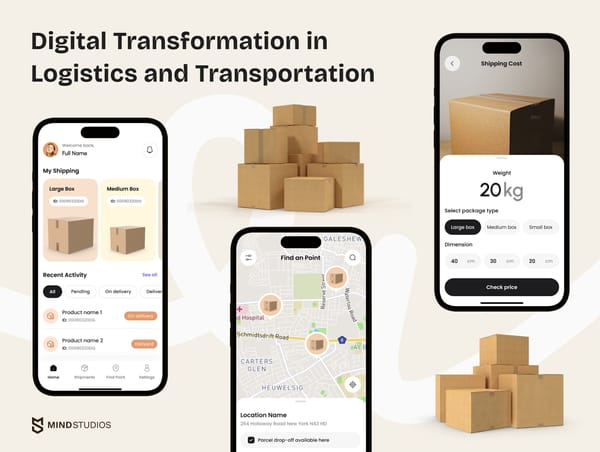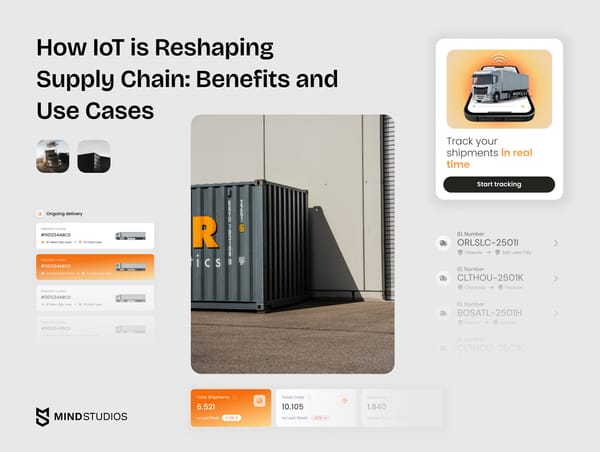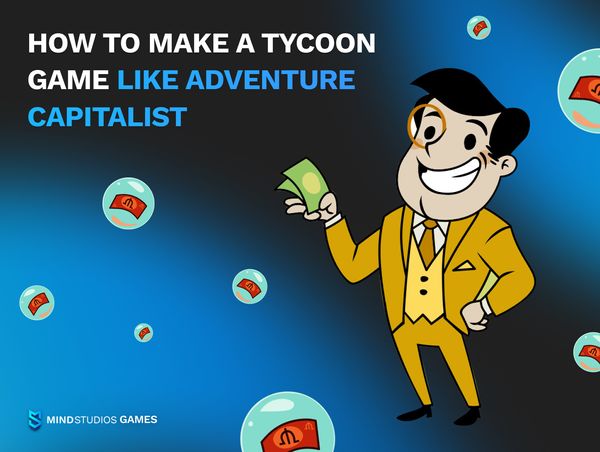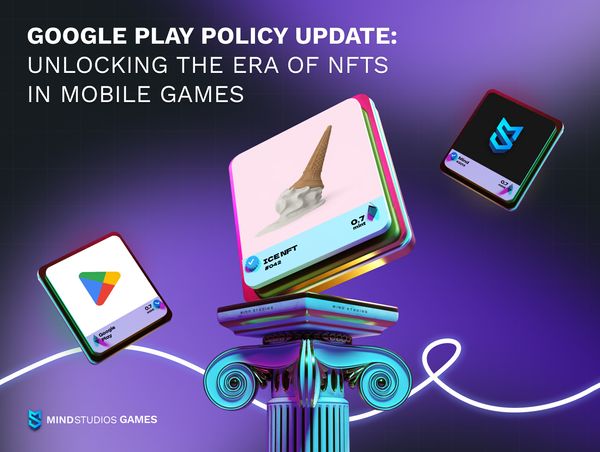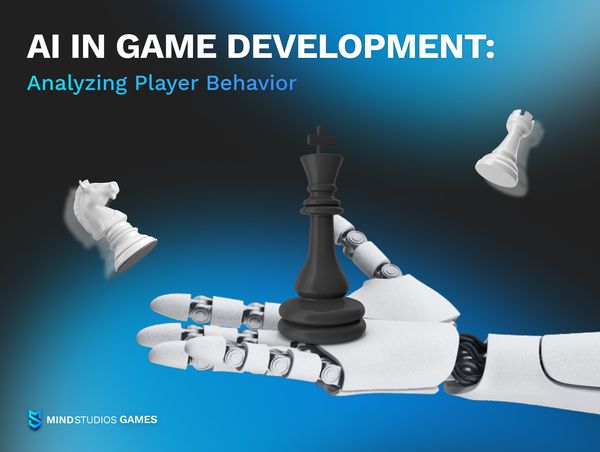Summer of 2023 was a big win for web3 proponents — Google announced that it would change policies regarding the use of Non-Fungible Tokens (NFTs) in apps and games hosted on Google Play Store. As a mobile game development company that also worked with several projects involving blockchain-based games and NFTs, we couldn’t avoid being intrigued.
This “games with NFTs” policy comes with restrictions — which is to be expected, as there are a lot of unethical ways to use NFTs, and acknowledging it is important. That’s why we decided to dive into this Google Play policy change and pick it for details. In this article, we’ll try to explain all the legal and tech speak in simpler terms for anyone interested.
Overview of Google Play policy change
Blockchain apps were allowed on Google Play Store before, but only for apps that offered secure holding and exchange of cryptocurrencies or decentralized data storage, and even that had been at the condition of strict adherence to local legislations. Mining crypto was — and still is at the time of me writing this article — forbidden in the apps published in the store. So what’s changed?
Now that Google Play has new store rules for NFTs, here’s what we have on our hands.
The restrictions about adherence to regulations and local legislations are still in place, but some other rules will also apply to apps and games featuring NFTs. For starters, it is forbidden to use NFTs in a game as a “gambling” prize if your game isn’t classified as a gambling app. (If it is, there’s a separate registration policy as well as a whole separate set of rules.)
Here’s a quote from the policy center:
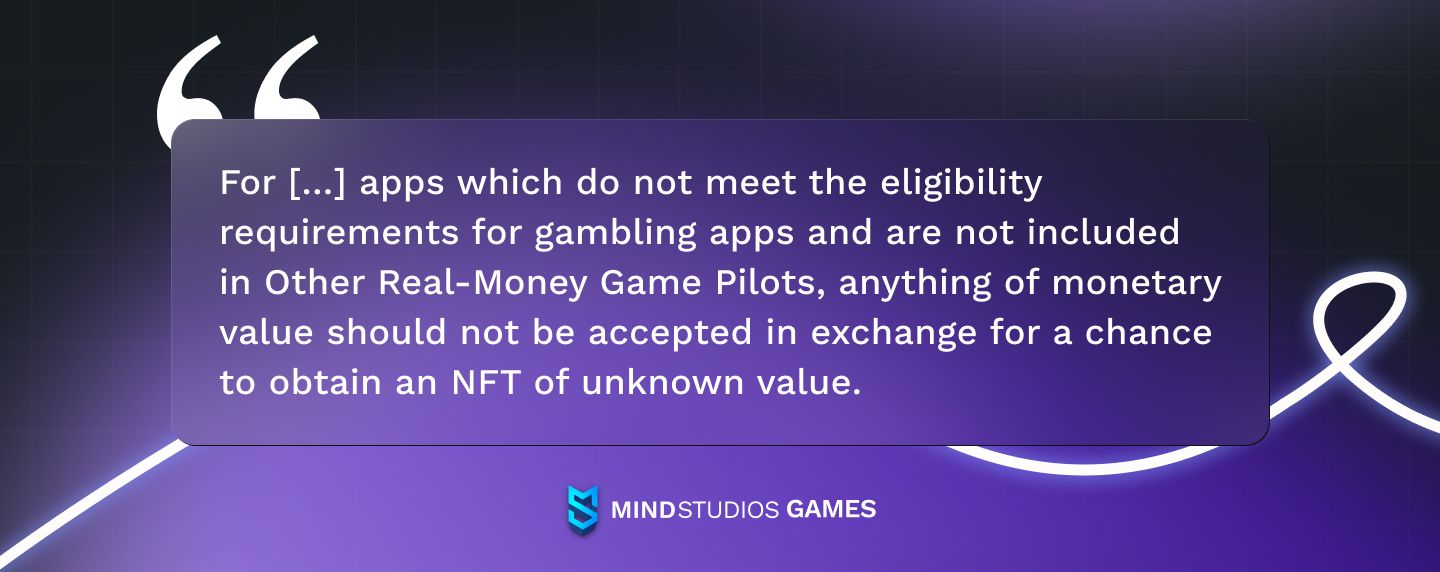
What this means, essentially, is that if you integrate NFTs into your mobile game, you need to state clearly the value of each token. You can’t ask players to buy something like a “surprise loot box” where they might win a random NFT from a list of possible tokens of varied values.
The next part expands on that:
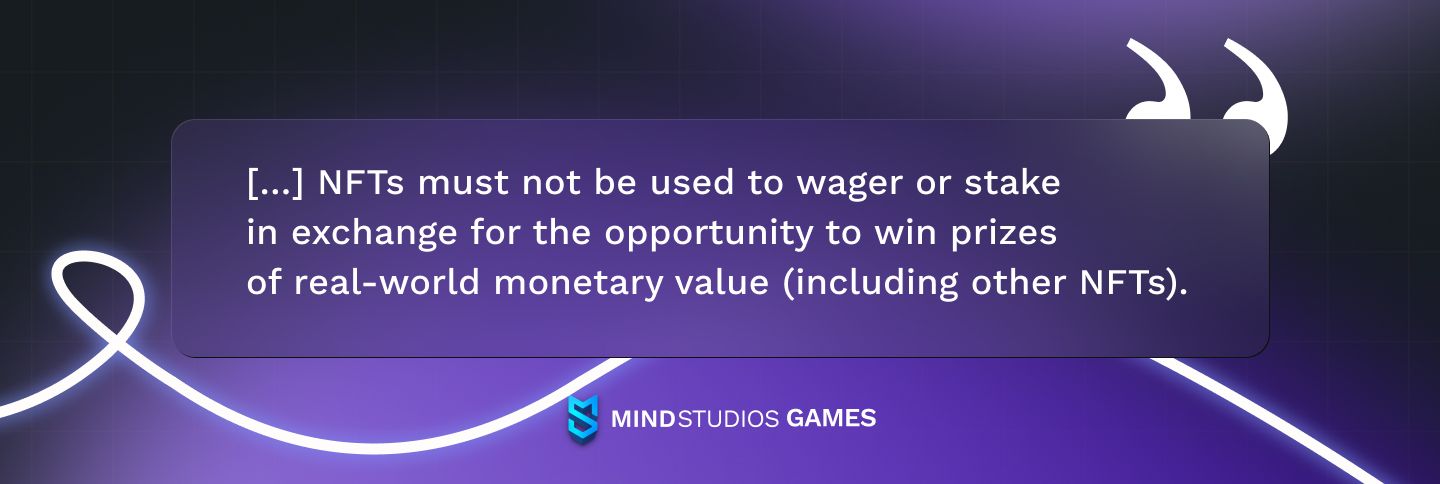
Meaning, players in your game can buy, sell, and exchange NFTs of definite (and equal) value, but they can’t use NFTs for something where they aren’t guaranteed to receive something of equal value. The example on the page is that of slot machine games — these can’t use NFTs as prizes or wagers.
And since it’s forbidden to withhold the value of NFTs a player might obtain, it is also forbidden to phrase the NFT descriptions in a way that overly praises a possibility of profit through trading NFTs in the game. This is similar to what the platform asks from gambling apps in its Real-Money Gambling, Games, and Contests policy.
Finally, mobile game developers that add NFTs to their games are required by Google Play to clearly state the presence of tokenized assets (both fungible and non-fungible) in:
- The game’s Financial features declaration form
- Each product’s details when creating an in-app product
As you can see, the emphasis in these new Google Play policies about NFTs lies heavily on complete transparency between game developers, Google Play Store, and players.
Guidelines from Google Play for NFT integration
The new policy listed things game developers can’t do with NFTs in their games. What can they do? How can game developers offer NFT use to players while complying with regulations?
Let’s once again go over the policies, and we’ll explain the ways to adhere to the rules.
#1 Rule on value to players’ experience
Here’s what the policy says:
“NFTs bought by users should be consumed or used in the game to enhance a user’s experience or aid users in advancing the game.”
Here’s how we would interpret it.
An NFT of a unique game character, a skin, or any item that can aid progression or to genuinely delight the player while being actively used in the game — is permitted. An NFT for the sake of NFT, that will sit in the player’s wallet and not contribute to the experience in any way — might not pass the moderation.
#2 Rule on the chance to obtain an NFT of unknown value
This rule is based on the Google Play Store policies for gambling. You can’t have NFTs as gambling prizes. But what is gambling, rules-wise?
Gambling is when a user provides something of value (in our case — monetary value) to have a non-guaranteed chance to obtain a prize of a similar or higher value to what they provided.
To comply with this rule while integrating NFTs into a game, a game developer can:
- Sell NFTs as in-app purchases.
- Distribute NFTs as rewards for mission completion or leaderboard ranking.
- Reward players for taking specific actions/unlocking achievements, whereas said actions or achievements require some sort of payment to have the opportunity to unlock (e.g., events or quests that are non-essential but integrated into the game’s plot).
- Add NFT assets among the rewards in battle passes or similar purchasable loyalty programs, like daily rewards for subscription packages.
Basically, what’s important for this part of Google Play developer guidelines for NFTs in games is that players don’t directly purchase in the in-game shop a box with an unknown NFT item inside.
#3 Rule on using NFTs as wagers
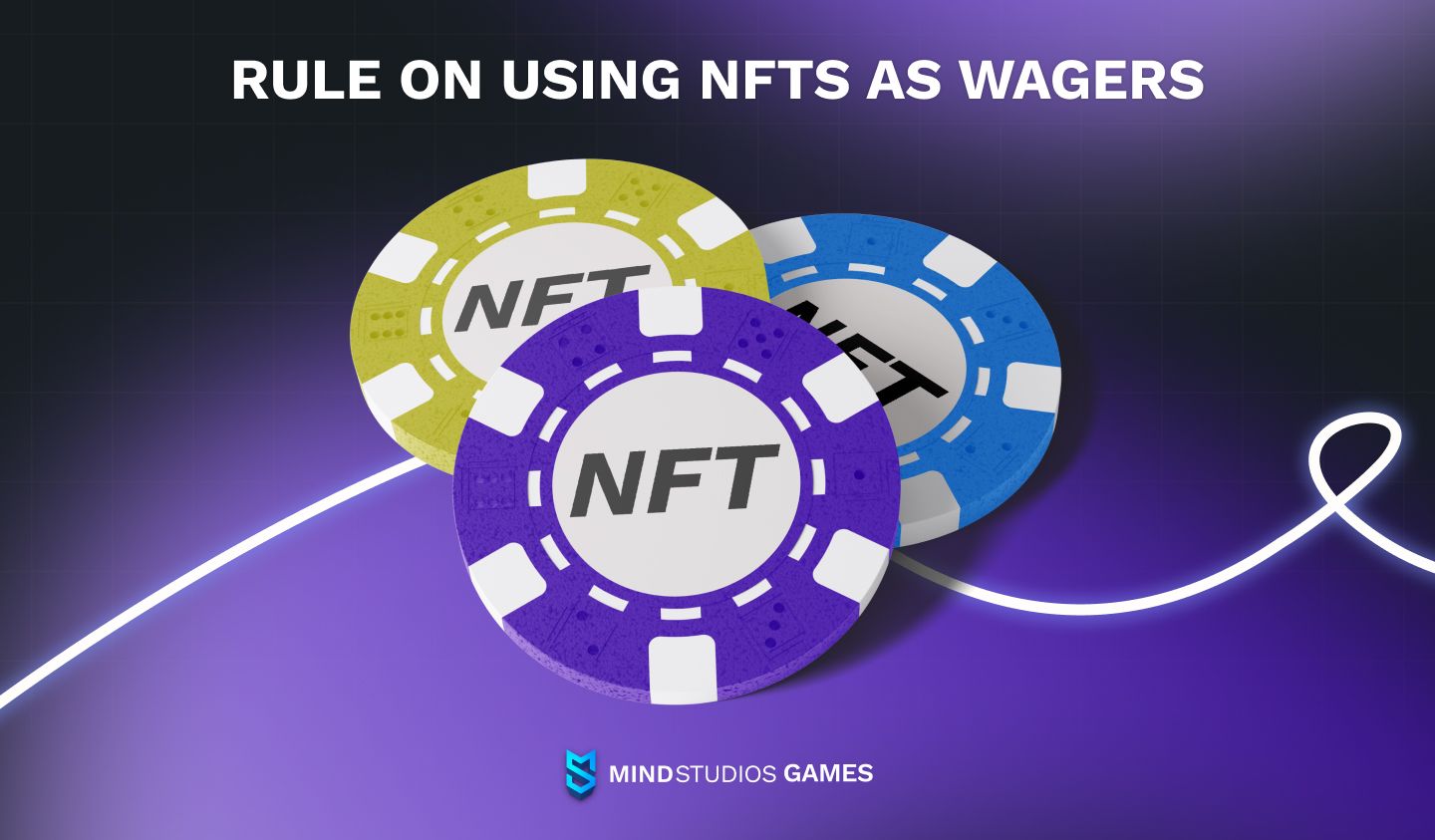
As we understand this rule, a game developer must not make players put their NFTs as wagers or stakes to play the game, or any mini-games in it, with the promise of winning something else.
So, you can't ask your players to give up their NFTs so that they can, say, join a card game with tokens, other NFTs, or real-life money at stake.
These are just our general surface-level considerations, and based on the type of NFT game you wish to make, there might be other ways to avoid breaking the rules while getting the best value from NFTs.
At Mind Studios Games, we always try to approach every project with consideration to its uniqueness, and to solve any challenges on a case-by-case basis. We will ruminate over ways to interpret any policy together with our clients, and when necessary, we’ll approach the relevant review teams from the Google Play Store itself. And that’s what we recommend everyone else to do as well.
Benefits of integrating NFTs in mobile games
Now that we went over the changes to the NFT and blockchain games Google Play policy, let’s talk about why should game developers jump through all those hoops. Is there even any value in integrating NFTs into mobile games?
Well, if there weren’t this policy change wouldn’t even happen, of course, as there would be no need to allow NFTs in Google Play Store. But what is that value, exactly? There are a number of benefits, actually. Here are they.
| Benefits of integrating NFTs into a mobile game | |
|---|---|
| Player engagement and retention | Even in the policy change announcement itself, back in July 2023, Joseph Mills, Google Play’s group product manager, said that the reason for this was that Google Play wanted to offer developers an opportunity to create more engaging apps. Unique and rare NFTs can entice players to spend more time in the game, increasing overall player activity. |
| Interoperability between games | Thanks to blockchain, players can use their NFT items across multiple games, which is a novel experience in video gaming. This can also boost player engagement. |
| Community building | Games are already a well-known way to foster communities, of course. Discord servers dedicated to some games have hundreds of thousands of participants. NFT games won’t be an exception: Community members may be motivated through exclusive NFTs or special privileges. |
| Monetization opportunities for developers | NFTs open up new revenue streams for game developers. Players are willing to spend money on limited edition or rare in-game items, creating opportunities for microtransactions and in-game purchases. |
| Enhanced creativity for game development teams | Anything can be an NFT as long as it’s digital content: artwork, music, even virtual real estate. This opens up possibilities for collaboration with artists and musicians, allowing game developers to create unique and valuable content for their players. |
| Reduced fraud | Since ownership and transactions involving NFTs are recorded on the blockchain, it becomes harder for players to cheat the system or engage in fraudulent activities. |
| New approaches to game design | Creating games where the scarcity and uniqueness of NFTs play a central role in gameplay will surely be a fun challenge to any passionate game designer, pushing them to produce new and exciting gaming experiences. |
Challenges and considerations
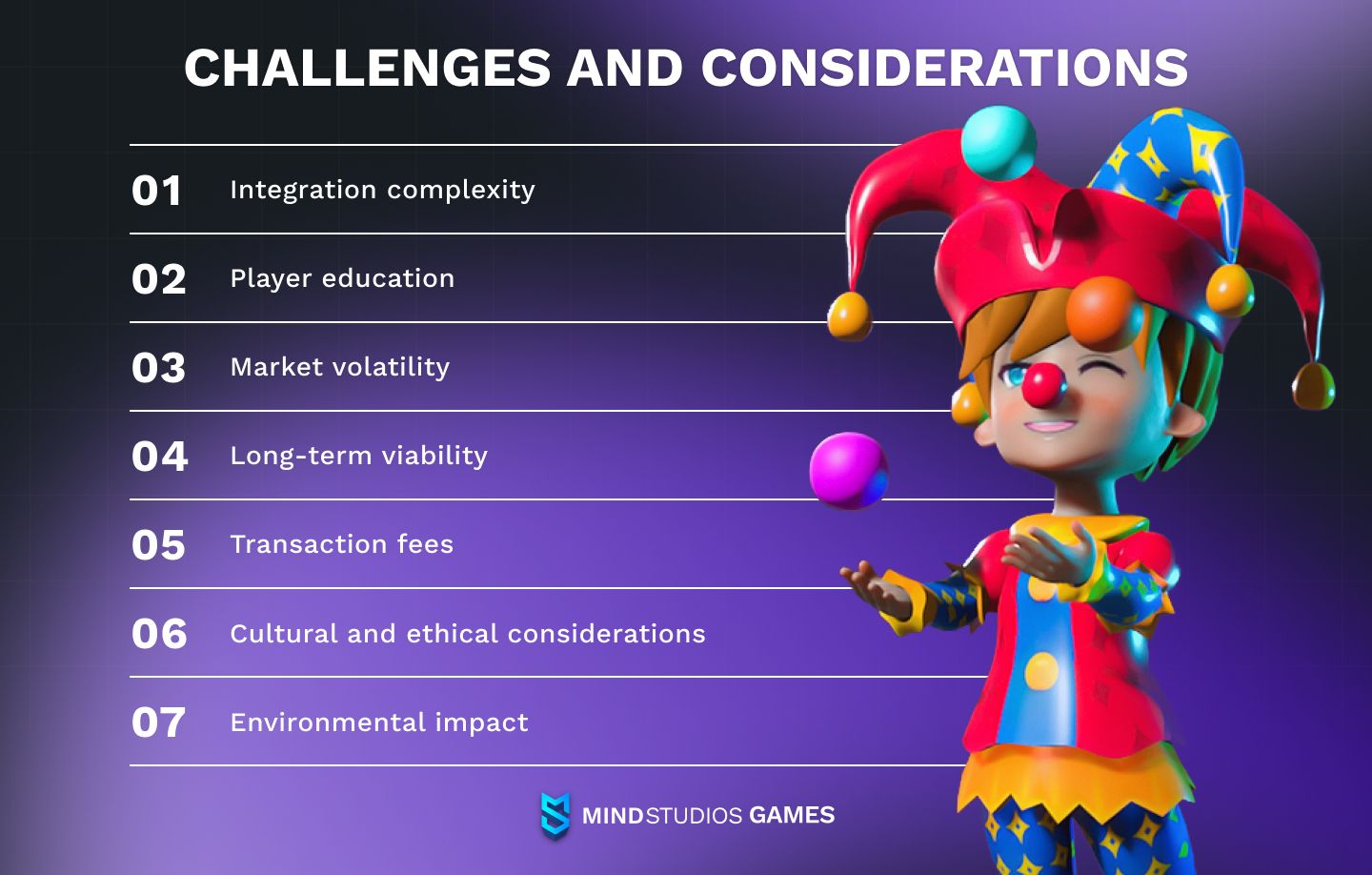
It’s not all sunshine and rainbows, of course. NFT integration into mobile games has its own set of possible pitfalls, besides the Google Play policy change. Here are some of them:
#1 Integration complexity
Integrating NFTs into existing game architectures can be complex. Your developers need to invest time and resources into understanding the intricacies of blockchain integration, smart contract development, and user wallet interactions. This can require specialized knowledge that might not be present in traditional game development teams.
#2 Player education
Understanding blockchain technology, cryptocurrencies, and NFTs can be challenging. If your target audience doesn’t solely consist of blockchain, crypto, and NFT lovers, you need to provide clear and accessible information to educate your other players about these new concepts, ensuring a smooth onboarding process and reducing potential user frustration.
#3 Market volatility
The value of cryptocurrencies and NFTs can be highly volatile. Developers and players may face uncertainty regarding the real-world value of in-game assets. This can impact player trust in the virtual economy and influence the willingness of players to invest in NFT-based items.
#4 Long-term viability
The NFT market is still relatively young and evolving. Before adding NFT into your game, you should carefully assess the long-term viability of such integration, considering potential shifts in market trends, technological advancements, and changes in user preferences.
#5 Transaction fees
As the game’s owner, you’ll be the one paying transaction fees for minting and transferring NFTs to players’ wallets. Based on the blockchain platform used, the names will differ: Ethereum calls them “gas fees”, Solana goes with the straightforward “transaction fees”, and Bitcoin with “network fees”.
Now, generally, transaction fees in cryptocurrencies aren’t very big — Ethereum takes about $0.5 per transaction on average. However, they’re volatile. If a currency you use becomes overwhelmingly popular for some reason, its transaction fees might skyrocket to control the network. This happened to Ethereum not so long ago, in December 2023: due to the popularity of NFTs called Buterin Cards, fees reached $10 per transaction.
Since we’re talking about NFT games, the goal of which is to become popular and trade as many NFTs as possible, you’ll need to keep in mind this possibility when you shape your game’s monetization and choose the blockchain platform.
#6 Cultural and ethical considerations
NFTs have generated debates about cultural appropriation, ownership rights, and other ethical considerations. Developers need to be aware of potential controversies and ensure that the integration of NFTs aligns with their game's values and the expectations of their player base.
#7 Environmental impact
Many blockchain networks have been criticized for their environmental impact due to high energy consumption. It’s important that developers choose blockchain with environmental sustainability in mind and explore eco-friendly alternatives to address concerns related to the carbon footprint of NFT transactions.
Examples of successful NFT integration in games
The new Google Play policies about NFTs came into full force only recently, in December 2023. Hence, right now, there aren’t many mobile games on the market that can already claim successful NFT integration. But one title actually became the first web3 game allowed on the Google Play Store.
Axie Infinity: Origins
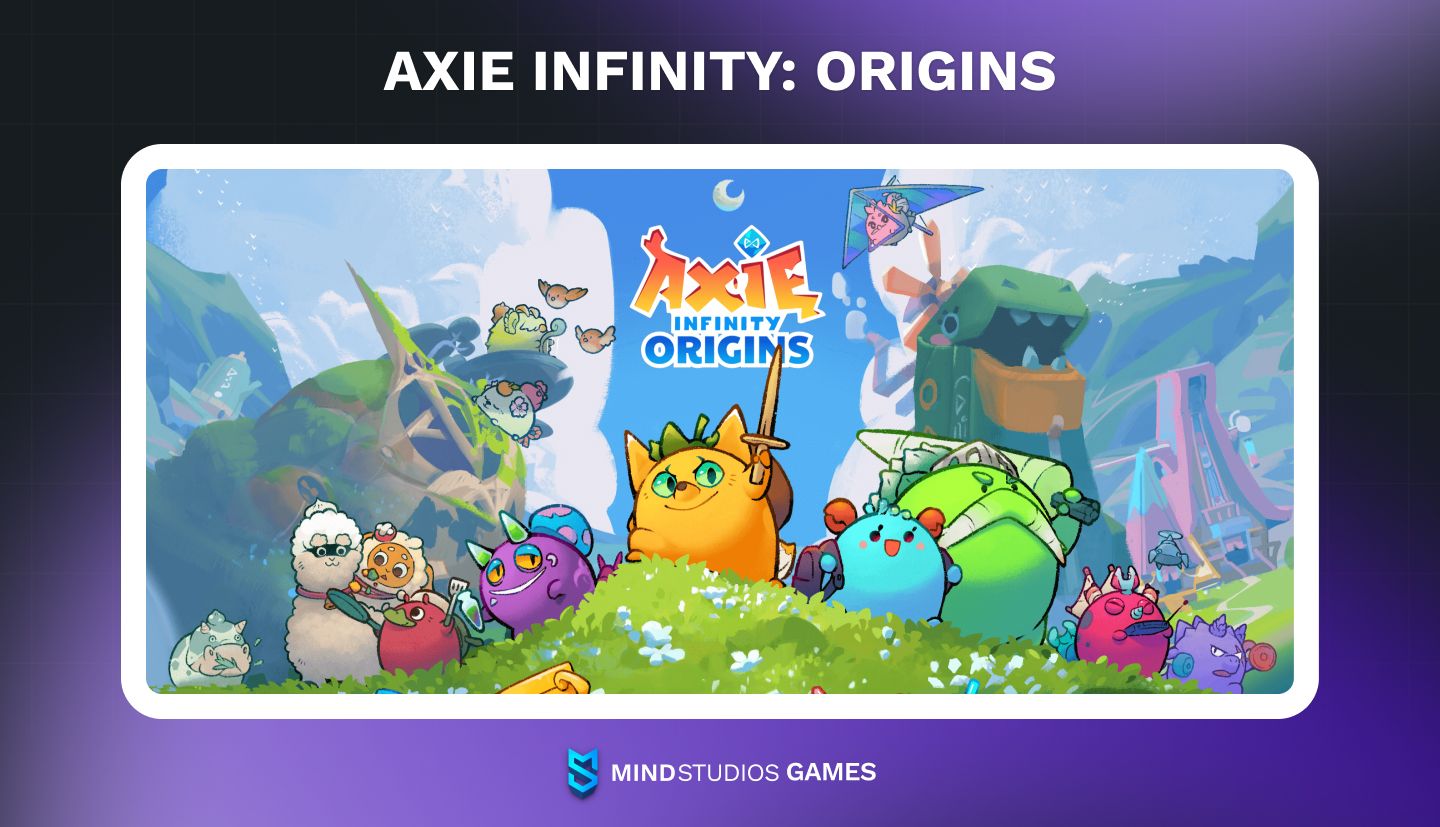
The abridged version of a popular web3 NFT game Axie Infinity appeared on Google Play Store at the end of 2022, half a year before the current policy changes hit the NFT games news for the first time, and almost a full year before said policies came into power.
Of course, since at that time, Google Play Store didn’t yet allow NFT games, Axie Infinity: Origins had limited functionality: there was no option to earn tokens. But since then, Sky Mavis (the company behind the game) was one of the companies that worked with Google to introduce the changes we see today. So chances are, one of the next updates will bring NFTs into the mobile version as well.
Built on Ethereum and Ronin blockchains, the original Axie Infinity offers players an opportunity to collect, breed, battle, and trade digital creatures called Axies, each represented by unique NFTs. These Axies can be bought, sold, and traded in the in-game marketplace.
The game's Play-to-Earn model allows players to earn cryptocurrency rewards by participating in battles and completing various in-game activities.
The Sandbox
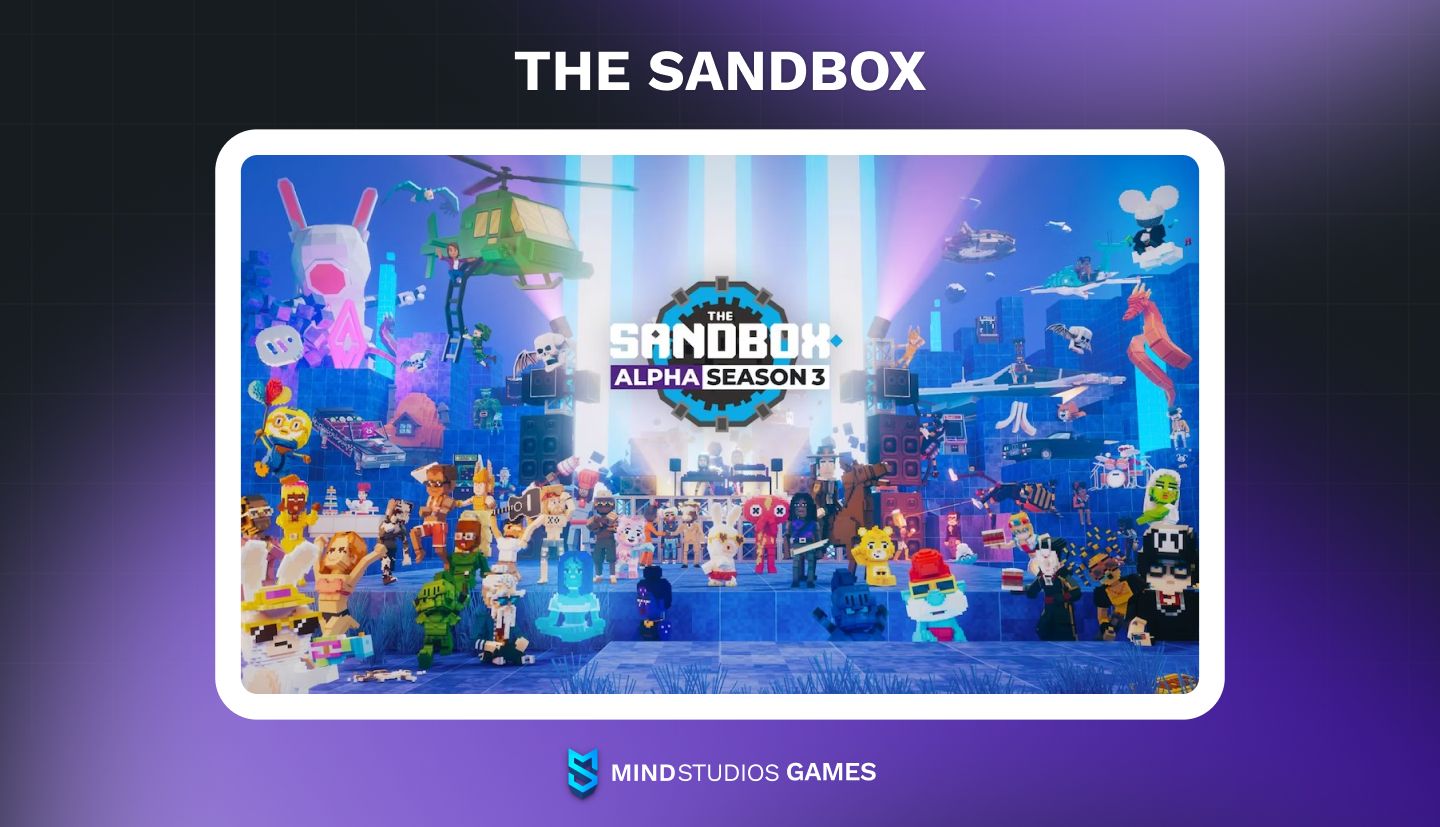
True to the name, it’s a metaverse sandbox game — currently only available on Windows PCs — that allows players to own “lands”, build on them whatever they want, and own what whey build.
The creation of assets by players is made possible by using VoxEdit, an NFT creator mechanism for voxel art. Players can create anything, from items to buildings to creatures. Suffice to say, players can sell the NFTs they create on the game’s marketplace.
What makes The Sandbox stand out is that it’s a fully community-driven game. So much so that players can actually take part in deciding the platform’s future, as they have voting rights when there’s need for The Sandbox managers to make a vital decision.
Finally, another perk is that there’s a downloadable The Sandbox’s game maker, a game builder software that makes it possible to build your own game without any coding.
Illuvium
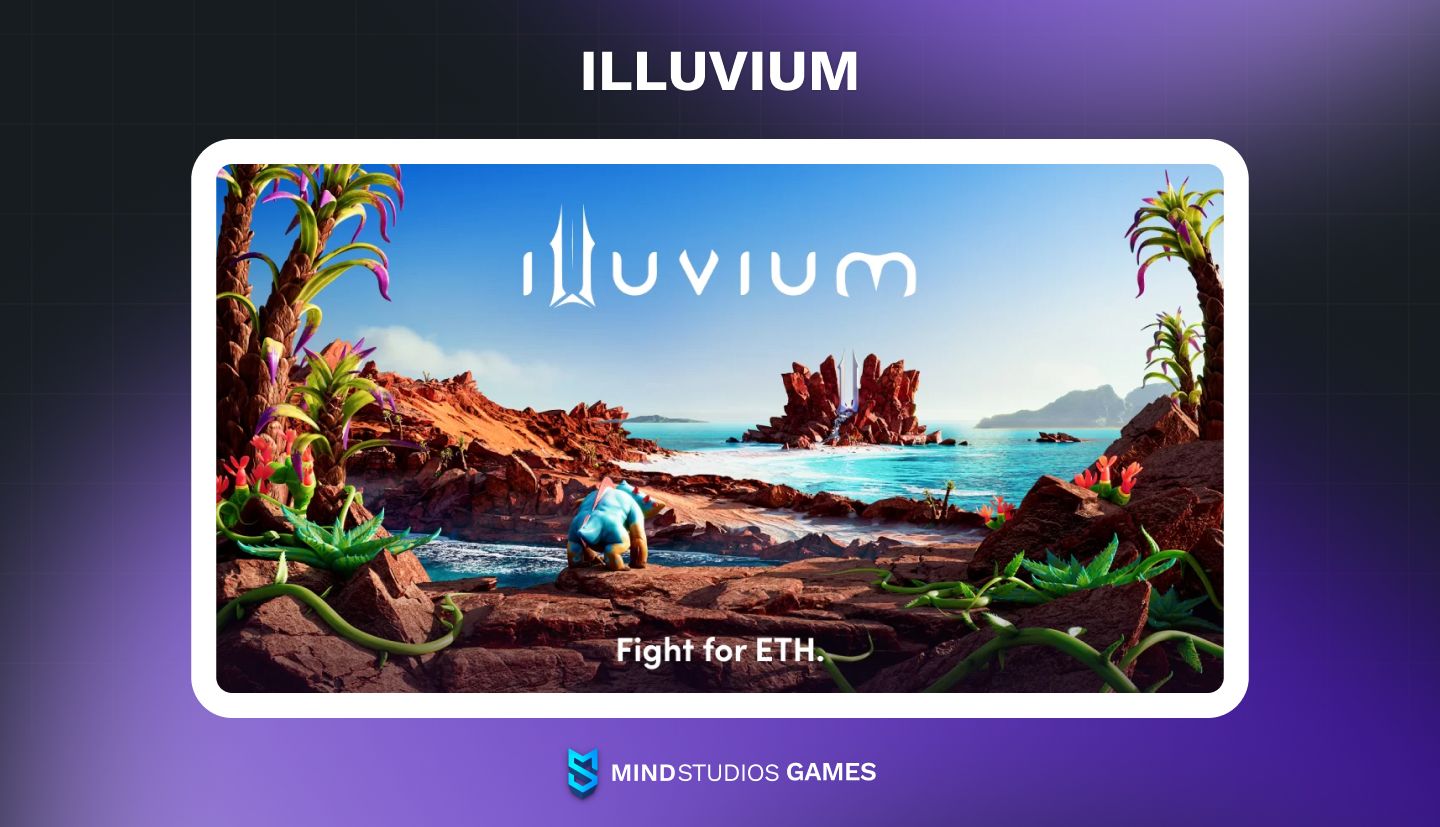
An open-world RPG for Mac and Windows, Illuvium is the first AAA play-to-earn game. Players start on the alien planet Illuvia (hence the game’s name) and need to survive. To do that, they can explore the world, complete daily quests, and catch local legendary beasts called Illuvials. Basically, your normal open-world RPG, but on blockchain and with NFTs.
All in-game collectible items and creatures in Illuvium are NFTs, and players can create new beasts by merging two owned ones. There’s also a PvP arena where players can battle or make wagers to obtain tokens.
Thetan Arena
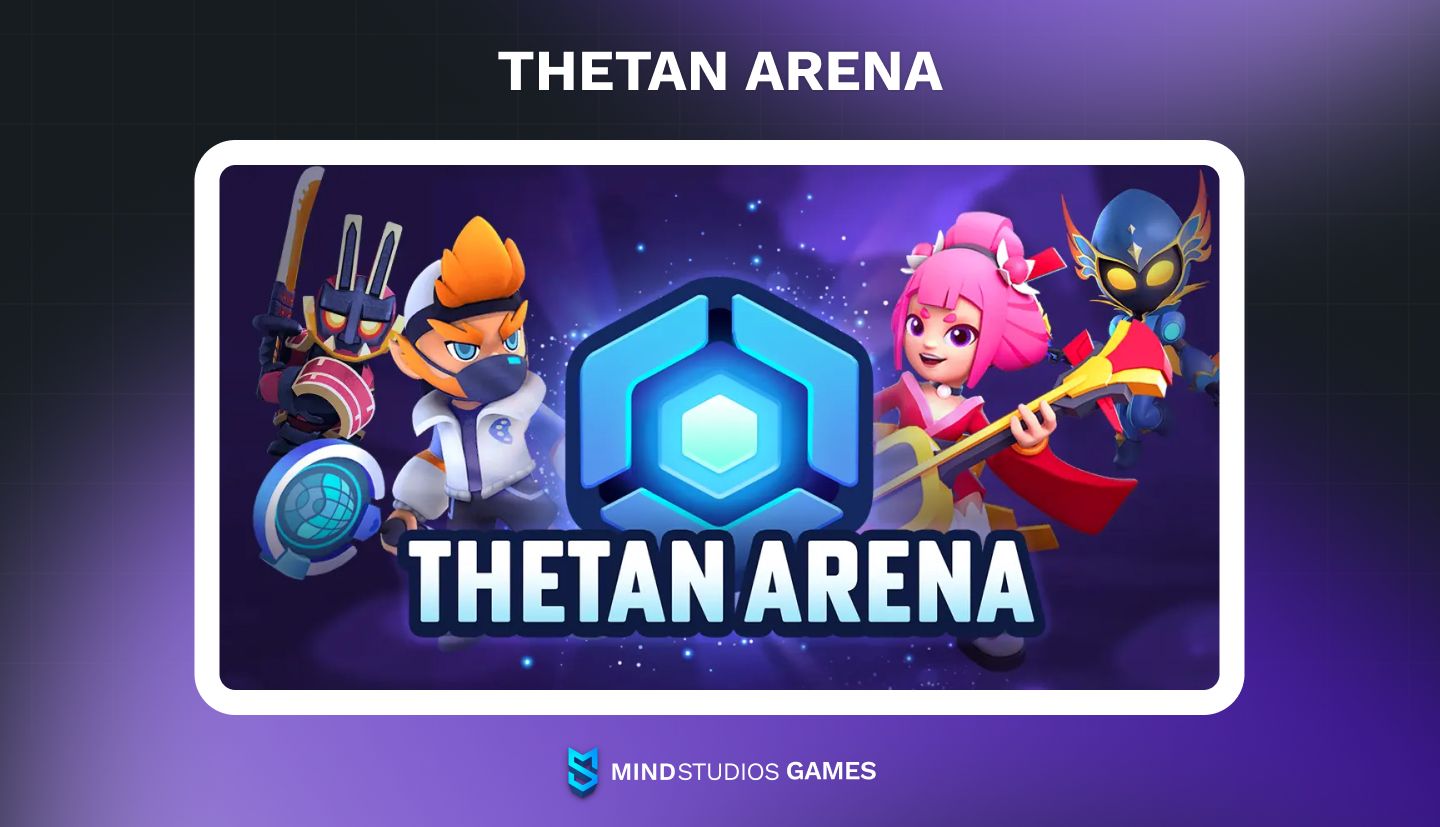
A blockchain-based game that offers both F2P (free-to-play) and P2E (play-to-earn) models. It’s a PvP arena game where teams of players battle each other for rewards.
One of the things that attract players to Thetan Arena is that it is possible to earn without spending money first. When players register in the game, they get a common hero to use in battle. Depending on skills, it’s possible to win fairly good rewards — Thetan Coins ($THC) — that players can either spend to purchase better NFT heroes or sell on the marketplace.
By buying an NFT hero of higher rarity from the marketplace and using them in battle, players will get more rewards, though, as rewards are partially based on the hero rarity. If a player is hesitant about which hero to buy, they can rent them to try out. Announcing NFTs happens outside the game itself, on a separate website.
Additionally, Thetan Arena rewards players who participate in events and live stream the game.
Conclusion
NFT integration into games opens doors to a myriad of possibilities, from creating digital collectibles with real-world value to implementing play-to-earn mechanics that reward player participation. The success stories of games like Axie Infinity demonstrate the potential for NFTs to revolutionize the gaming industry and reshape the relationship between players and game developers.
With the new Google Play policies about NFTs, developers are encouraged to explore the opportunities presented by NFT integration in mobile games as well. By embracing innovation, we can tap into new revenue streams, enhance player engagement, and establish vibrant gaming communities that thrive on creativity, ownership, and collaboration.
We have the chance to pioneer groundbreaking experiences that captivate audiences and redefine the future of mobile gaming.
Our development team at Mind Studios Games has already dipped their toes into the river of blockchain and NFT in games. We’ve collaborated with several companies creating blockchain-based games, and we have also created NFT assets for our partners. So we can navigate this new trend with certain confidence. If this Google Play policy change has inspired you to look for opportunities to integrate NFTs into your existing mobile game or to create a completely new title, book a free consultation with us to see if we can be of assistance. (We probably can 😏)

